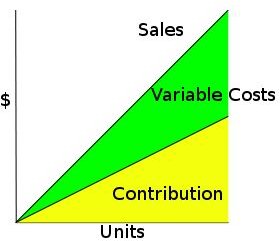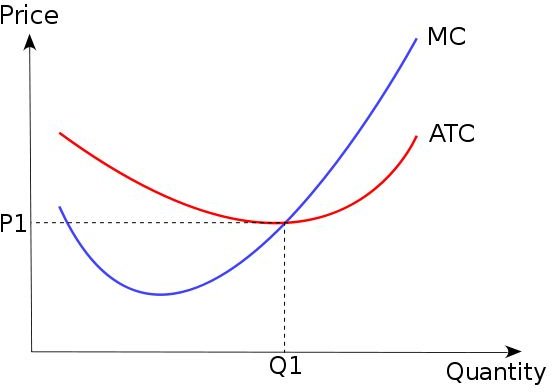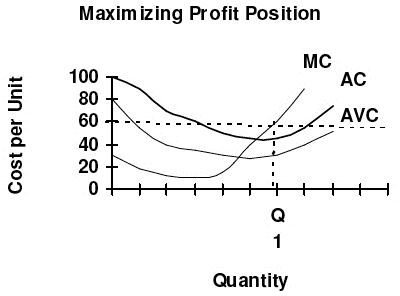Learn How to Evaluate Standard Costs with a Case Example
Understanding the Development of Cost Limits
A budget planner tasked to develop a set of benchmark limits by which expenditures are incurred, should have adequate knowledge of the premises being worked on. The matter of determining standards tends to be all encompassing; hence, it requires a clear definition of the situation and objectives of the business activity.
Some limits may have too little leeway for waste or possible errors, to the point of creating a scenario where the metrics for job performance is likewise set at perfection levels. In such cases, the resulting variance presents extreme possibilities. Failure to meet a targeted goal could be taken as an underachievement or lack of enthusiasm on the part of the worker. On the other hand, positive variances bring high expectations for economic rewards, in terms of profit shares or commissions.
In other cases, standards can be set at achievable goals, where potential errors or spoilage are expected as normal in the course of the business. However, in evaluating their variances, the challenges hurdled were ordinary and expected. Under this scenario, the achievable level is kept only at arms length and within a safety zone; results if any, can be evaluated as untested against other possibilities. .
The Need for Flexibility in Evaluating Results

There are certain drawbacks in setting boundaries that do not explore the extent of full business potentials, especially if the workforce is already skilled and adept. The application of resources could have produced more, but since goals have already been achieved the workforce tend to rest on its laurels. Workers merely coast along and wait until the business cycle is over, since goals have already been achieved.
In a work-driven environment, quality of output could suffer, as workers are expected to be relentless and there’s no room for leaves of absence. This means application of useful resources could likewise result in higher incidences of spoilage and errors as fatigue sets in and becomes prevalent.
Hence, it should be kept in mind that in evaluating a particular set of cost standards, it would be best to make assessments based on existing work environment and business conditions. Understand that boundaries may have been based on industry models, and chosen according to similarity in business size or volume but there should also be flexibility.
Reviewing the standards costs are based not only on historical facts since they are regarded as boxed-in expectations. Other factors to consider include, but are no limited to:
- the current industry trends;
- the possibility of increased market prices;
- the implementation of certain federal and statutory regulations;
- the quality of the workforce, if comprised of mostly fully skilled workers;
- the rate of employee turnovers;
- the deviations that resulted to failures in meeting previous standards.
Example
Supposing the following are the givens:
Historical Costs and Conditions = 5,500 pcs at $35 cost of raw materials per piece, representing the number of PVC elbow pipes produced in the previous month by a full set of fully skilled workers who were able to achieve zero-defects.
1. Standard quantity of materials used = 30% additional materials are expected to produce defective pipes due to the large presence of new hires.
Standard costs of materials used = Anticipated increase in fuel costs, expect prices of raw material to increase by 15%.
Actual quantity of output = 6,950
Actual Price of materials used = $41.50
Computation of Standards:
1. Standard Quantity (SQ) = 5,500 x (100% + 30%) = 5,500 x 130% = 7,150 materials to be used including defective elbow pipes.
2. Standard Price (SP) per unit = $35 x (100% + 15%) = $35 x 115% = $40.25 anticipated increase in per-unit price of raw materials
3. Standard Costs (SC) = Standard Quantity x Standard Price = 7,150 x $40.25 = $287,787.50
Evaluating the Variances Against Standard Costs

Material Price Variance = (SP – AP) x AQ = ($40.25 – $41.50) x 6,950 = $1.25 x 6,950 = $8,687.50
However, if the Material Price Variance was computed based on Standard Quantity, the increment in price of raw materials would have been $8,937.50 computed by way of this equation: $1.25 x 7,150 = $8,937.50
It should be noted that it’s not a simple matter of evaluating overall standard for material costs of $287,787.50 against the actual costs of materials of $288,425 ( computed by multiplying actual quantity of 6,950 by the actual price of $41.50).
The resulting cost variance, of course, will not be favorable due to the disparity in anticipated price against the actual price. This is now the point where we will review the standard costs used to achieve positive goals. Take into account the following factors:
-
The actual quantity of 6,950 for raw material used did not reach the standard threshold of 7,150, which included defective products that new hires were expected to contribute as production input. This means that there was a semblance of efficiency in the utilization of materials during production.
-
Had the entire production staff used raw materials at the expected levels, the manufacturing company would have incurred an increase in costs by $8,937.50. However, since the production workers were aware of their limits in raw materials usage, extra caution kept the materials below standard and thus lessened the impact of the price increase by incurring only a cost increment of $8,687.50.
-
However, there is still room for improvement in the succeeding months of production, wherein the workers will now recognize a new standard for quantity of materials at 6,950. Recall that this was forecasted with considerations for possible spoilage by new workers.
-
Assuming that the price of materials remains steady at $41.50 throughout the whole business cycle, there should be the objective of totally eradicating the 30 percent allowance for defective merchandise. The base for standard quantity of 5,500 or less, representing 100 percent efficiency by skilled workers, has become an achievable goal.

This is how to evaluate standard costs as effective. Consider all the factors present in reviewing the achievement of monetary goals that was set at its own standard of 100 percent efficiency. The standard quantity for materials used was initially tested if achievable by a production staff with a large number of new hires.
After a specific period, management will be able to determine the competency of the new hires and thus allow more confidence in tightening the cost limitations. However, the goal is still set at increasing production by reducing waste or spoilage common to all manufacturing company and not in degrading the quality of the material.
The 30 percent threshold will eventually be used as the target goal, since the skilled workers have manifested their capability to achieve this percentage of increase in terms of quantity with quality. This stands opposed to calculating the cost of quantity that includes the value of defective production.
Learn how to quantify the effect at achievable goals before aiming to develop and implement ideal standards, as this can help the company control costs as well as harness the full potential of the business’ resources.
Reference Materials and Image Credit Section
References:
- By Kaplan, Robert S and Cooper, Robin –“Cost & Effect: Using Integrated Cost Systems to Drive Profitability and Performance” lifted from https://books.google.com.ph/books?id=SP4ziJkv3yQC&pg=PA29&lpg=PA29&dq=evaluate+standard+costs&source=bl&ots=velY7Hw1Zv&sig=j10X_6xlz07ZxO53XlwAcV5qhK4&hl=en&ei=GZO-Tb7FLIWmvQPf9sy7BQ&sa=X&oi=book_result&ct=result&resnum=7&ved=0CDIQ6AEwBjgK#v=onepage&q=evaluate%20standard%20costs&f=false
Image Credits:
- CVP-TC-FC-VC by Nils R. Barth /Wikimedia Commons
- CVP-Sales-Contrib-VC by Nils R. Barth/ Wikimedia Commons
- Productive efficiency by Trampled at en.Wikipedia
- Profitmaximizing.by Rgreenone / Wikimedia Commons
